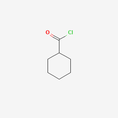classification
Antiallergic drugs>antihistamines
pharmacological action
Ketphenamine is an H1 receptor antagonist, and its chemical structure belongs to hydrocarbon amine. It can competitively block histamine H1 receptor on allergic target cells, so that histamine cannot bind to H1 receptor, thus inhibiting the allergic reaction caused by histamine. However, chlorpheniramine does not affect the metabolism of histamine, nor does it prevent the release of histamine in the body. Chlorphenamine also has central inhibition and anticholinergic effects, so after taking the medicine, there are drowsiness, dry mouth, constipation, thickened sputum and dry nasal mucosa. Through long-term clinical practice, it is believed that chlorpheniramine has strong antihistamine effect, small dosage and small side effects. The antihistamine effect of chlorpheniramine is stronger than diphenhydramine and promethazine, while the central inhibitory effect is weaker, and the anticholinergic effect is also weaker. It is suitable for children and patients who need to work during the day due to slight adverse reactions such as lethargy. Chlorphenamine can also reduce the secretion of trachea and gastric acid. Before the advent of a new generation of antihistamines, it was the most commonly used antihistamine in clinical practice.
Pharmacokinetics
13.2% of the prototype, 5.8% of N-demethylchlorpheniramine, another N-oxide of chlorpheniramine, and two unidentified metabolites were found in urine. Most of the polar metabolites were excreted after taking the drug. Chlorphenamine is metabolized by the liver and excreted through urine, stool and sweat. Breastfeeding women can also discharge part of their milk. Pregnant women can affect the fetus through cord blood.




